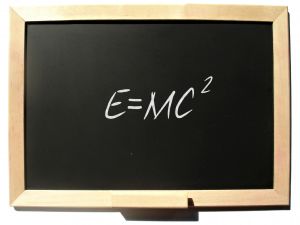In our previous post on the physics of shaving, we discussed what exactly goes on during the actual shave on the molecular level. To recap, the razor cuts through hairs because the force imparted by the razor overcomes the forces holding the hair together. The thinness of the edge magnifies the pushing force into a small area, enabling the razor to cut.This article will explain exactly how that works for those who are curious.
The basic physics law at work is Newton’s second law.
F=MA
In practical terms, the force behind the razor is controlled by how fast and hard we move the razor across our faces. Thus, to achieve maximum cutting force, we should strive to move the blade faster. In reality, the speed of the blade is absolutely restricted by the user’s skill and the threat of cutting into the skin. Put another way: move the razor too fast and your going to look chop up your face.
The other fact we can deduce from this formula is that a heavier razor will cut more effectively than a lighter razor. This is why wedge type razors are perceived to be better than hollow ground razors by some users. This also explains why 8/8″ razors are perceived to cut better. They are also popular the sheer size of the razor is desirable in itself to some users and collectors.
Back to the molecular level. We all know a sharper razor will cut through hairs more efficiently than a dull razor. This is because of the physics of pressure. Concentrating the force into a smaller area increases the level of force acting upon the hairs. The formula is below:
![]()
As you can see, the pressure exerted upon the hair increases as the edge radius decreases. Since reducing the edge radius decreases the surface area in contact with the hair, the force imparted upon the hair is magnified exponentially. However, the razor can only cut as well as the person handling the razor. We can decrease the edge radius to as small as possible, but ultimately, the F component is the key. If the user only uses 50% of their potential, the hair is only being cut half as effectively.
Looking at how razor dulling affects the forces exerted upon the hairs, we have to first define razor dulling. Razor dulling on the molecular level would be an increase in the edge radius (the thickness of the edge where 0 edge radius is a perfect razor). The above formula shows that a 10% increase in edge radius imparts a loss of 9.09% of the pressure acting upon the hairs. A 50% increase in edge radius results in a loss of 1/3 of the pressure. As you can see, the skill of the user is vastly more important than the sharpness of the razor.
So, to sum it all up: The sharper the razor, the greater the impact upon your shaving skill. However, the forces imparted by you are vastly more important than how sharp the razor is.
Did you like this post? Let us know in the comments below.

